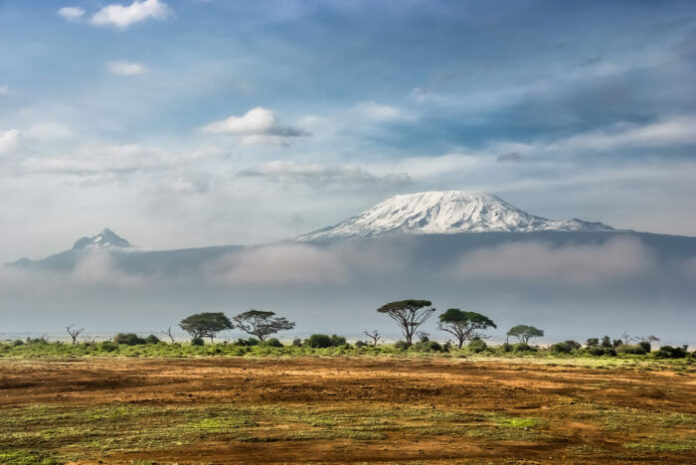
A fire of vast proportions is devouring the forests and steppe environments of Kilimanjaro, at 3,700 meters, in one of the most precious areas for the planet’s biodiversity. In all likelihood, the fires were spread by the fire lit to heat the food by one of the many expeditions. The fire affects an area of over 50 km2, fueled by drought and strong winds.
The firefighting operations, coordinated by the government (which has provided a helicopter) and involving more than 500 volunteers, are also made difficult by the lack of sufficient equipment. The United Nations has donated hundreds of sleeping bags and blankets. Businesses, NGOs (WWF Tanzania), tourist guides and neighboring communities are also providing support.
With its 6,000 meters, Kilimanjaro in Tanzania is the highest peak in Africa, which stands alone from the African savannah. The beauty of the places and the wealth of fauna and flora meant that in 1973 the Kilimanjaro National Park was created, declared a World Heritage Site by UNESCO in 1987.
Composed of three volcanic cones – Kibo, Mawenzi and Shira – it is a famous mountaineering destination, but it is above all one of the most iconic places on the planet. The hat of snow and ice that dominates its summit, against the backdrop of African savannas, has made this famous mountain an iconic landscape around the world.
“The loss of even a single square meter of the extraordinary habitats that make Mount Kilimanjaro a unique and precious ecosystem is a very serious loss for Tanzania and for the whole planet. To date, unfortunately, the fire has already destroyed more than 50 square kilometers, a real disaster – said Isabella Pratesi, WWF Italy Conservation Director – The whole world must become more aware of how much fires are a very dangerous plague, fueled by our erroneous behavior. and climate change. We must create a global enforcement and intervention system that helps the most troubled but biodiverse-rich countries to prevent and fight fires. The alternative is to witness the destruction of ecosystems and extraordinary and iconic places in a few years, just like Kilimanjaro”.
Kilimanjaro National Park is very rich in species: about 2,500 plant species, of which 1,600 on the southern slopes and 900 within the forest belt. 130 tree species with the greatest diversity between 1,800 and 2,000 meters. There are also 170 species of shrubs, 140 species of epiphytes, 100 lianas and 140 pteridophytes. There are 140 mammal species (87 forest species), including 7 primates, 25 carnivores, 25 antelope and 24 species of bats and 179 of birds including some rare and endemic ones. Occasionally present the bearded vulture and the alpine swift.Among the volunteers there are also colleagues from WWF Tanzania who, in the field, are trying by all means to create a barrier to the advancement of the flames.
“Committed as we are to fighting an unprecedented health crisis – they explain – we find it difficult to focus on what in many ways is a very serious threat to natural systems, those systems that, just like forests, are so crucial for our health and our future. We are talking about the fires that silently devour what we have saved with difficulty from the destructive action of man. After the Californian forests, those of Alaska, the Amazon and Australia, the fire in Tanzania is not to be considered a unique and casual event but one of the dramatic consequences of a global crisis, the climate one, which exacerbates the spread, the extent and effects of the fires “.
The flames on Kilimanjaro, triggered by the behavior of one of the many groups of porters accompanying the 50,000 visitors who walk its paths to the summit every year, have found an easy grip in a habitat tested by the ever-increasing temperatures and the drought that is folding many African regions. Just a few weeks ago the WWF had published the report where it highlighted that from the savannah to the tundra, no ecosystem is immune to flames.



































